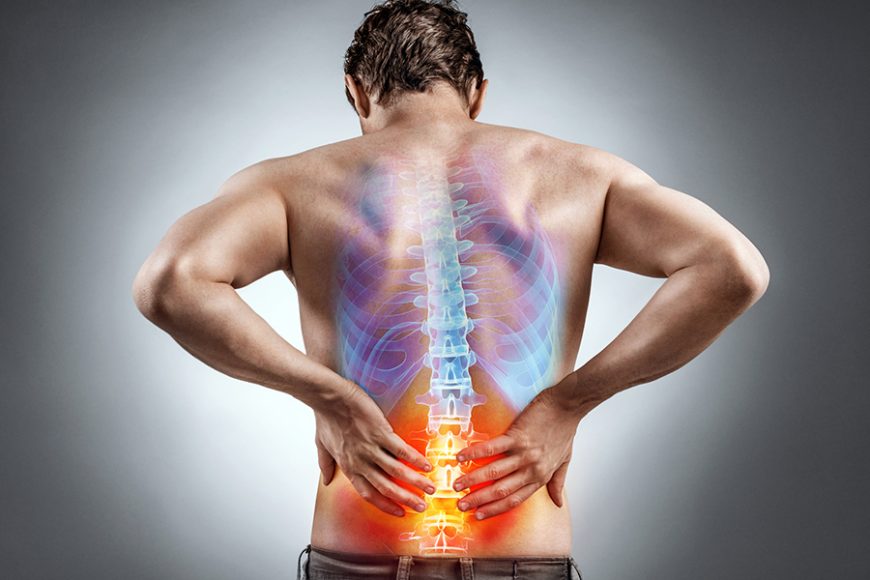It’s common that when back pain strikes the instinct is to lay down, move as little as possible and avoid physical activity. But the truth is that stretching and exercising can provide relief from back pain and also help to prevent flare-ups.
According to the National Institutes of Health, four out of five adults will experience lower back pain at some point in their lives. Therefore, it’s valuable to know what stretches and exercises can help you feel better.
Know that if you experience severe back pain that comes on suddenly, you should see a doctor. Another red flag is a “pins and needles” sensation down the back of your leg. In this case you may have sciatica — a condition you should also speak to your doctor about.
With low back pain due to typical muscle spasm or strain, gentle stretches and exercises can help the muscles supporting the lower spine. When muscles are more flexible and stronger, it’s likely they’re also less prone to injuries that can cause back pain.
Reducing incidents of back pain
While some exercises like running, lifting weights or shoveling snow wouldn’t be among the types of physical activity recommended during a flare-up of back pain, other exercises can help stretch out tight back muscles and strengthen weakened muscles.
Among many good choices, I often recommend these moves to patients to help relieve lower back pain:
• For stretching the lower back: Lying on your back, bend your knees and place feet flat on the floor. Keeping shoulders on the ground, roll your bent knees to one side, holding for 10 seconds. Return to your starting position and repeat on the other side. Do two to three series of these.
• For lower abdomen strengthening: Lying on your back with your knees bent and feet flat on the floor, bring one knee toward your chest and then return it to the floor. Repeat six to eight times for each leg.
• For deep abdominal strengthening: Lie on your back with a small cushion under your head and bend knees so feet are hip-distance apart on the floor. Keeping your upper body relaxed and chin tucked in, take a deep breath in. While exhaling, “pull” your belly button toward your spine and hold for five to 10 seconds. Relax your abdominal muscles as you breathe out and repeat five times.
• For mobilizing your lower back: On all fours, make sure your hands are directly under your shoulders and knees directly under your hips. Keeping your head in line with your spine, extend one leg and the opposite arm outward to line up with your spine. Hold for five to 10 seconds and repeat eight to 12 sides, alternating sides.
• For stretching hamstring muscles: These muscles, which run along the back of the thigh, are often quite tight when you’re experiencing back pain. Lie on your back with both feet on the floor and knees bent. Looping a towel under the ball of one foot, straighten your knee and slowly pull back on the towel. Hold for 20 seconds and repeat twice for each leg.
Be sure to warm up muscles before stretching them. Move slowly and gently and don’t bounce while stretching.
Preventing flare-ups
Continuing a stretching and exercising routine daily after an episode of back pain helps. People who exercise regularly typically have fewer episodes of back pain compared to people who aren’t as physically active.
Try these recommended exercises to keep back pain away:
• Knees to chest: Lying flat on the floor with knees bent, pull one knee to your chest and hold for five to 10 seconds. Repeat five to 10 times for each knee.
• Pelvic tilt: Lie on your back and place a small cushion under your head. Bend your knees and keep feet hip-width apart on the floor. Keeping your upper body relaxed and chin tucked in, gently flatten your lower back into the floor while contracting stomach muscles. Then tilt your pelvis toward your heels, feeling a gentle arch in the lower back and your back muscles contracting. Then return to starting position and repeat series eight to 12 times.
• Bridge: Lying on your back with knees bent and feet placed hip-distance apart on the floor, lift hips off the floor until shoulders, hips and knees are all in a straight line. Breathing in, lower hips to floor. Repeat eight to 12 times.
Kaliq Chang, M.D., is an interventional pain management specialist, double board-certified in interventional pain management and anesthesiology, in practice at Atlantic Spine Center. For more, visit atlanticspinecenter.com.

